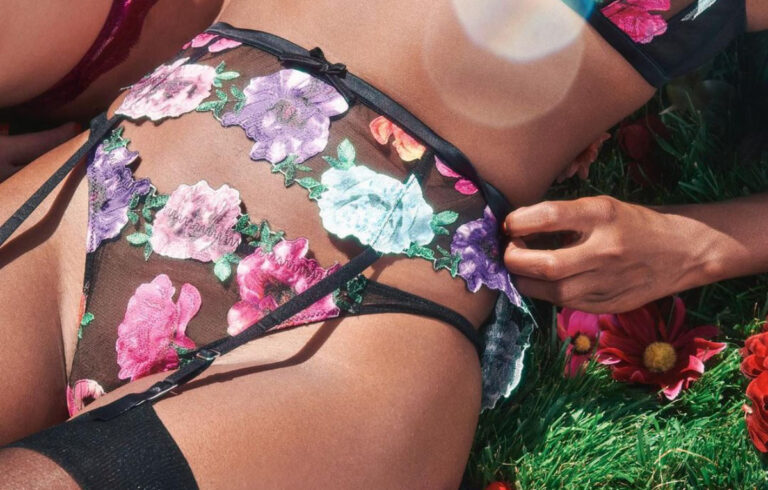Why do women’s underwear have small bows on them?
In her song ‘Get On Your Knees’, Nicki Minaj eloquently said, “Got a bow on my panties ’cause my ass is a present,” and fair enough, she made a good point. But have you ever wondered what the real reason behind the small decorative bows on women’s underwear is? From a practical purpose to a remnant of binary gender distinguishment, here’s the full story behind the ornamental relic.
Back then
Women’s panties were first introduced during the Renaissance. Their main function was to maintain hygiene and cleanliness, but they also protected ladies from the cold. In addition, panties used to save a woman the ‘embarrassment’ if she fell off a horse.
It is assumed that, at first, bows adorning underwear only had a practical purpose. In men’s vintage underwear, if you go as far as the Middle Ages, there also were bows of some sort. But they were rather strings to keep the underpants from falling down as elastic was yet to be invented.
But that wasn’t the only reason bows were needed—many centuries ago, people lived without electricity, which meant most people often had to dress by candlelight, and women especially tended to dress before dawn in order to perform household chores. They needed this bow to find the front of their panties.
HistoryExtra goes on to further explain that, during the Middle Ages, a woman having a bow on her undergarments was seen as a ‘hussy’ who slept around more than the public expected her to: “When women are shown wearing pants it’s always in the context of ‘a world turned upside down’. Trousers and underpants were considered a symbol of male power and women wearing them were pugnacious wives trying to usurp the authority of their husbands, or women of low morality.” It’s probably safe to assume that back in those days, women were only allowed to sleep with a man if they intended on marrying him and getting pregnant.
Nowadays
The same question we’re answering today was asked in 2015 on the AskWomen subreddit. Interestingly, one of the responses sparked a curious theory as to what the bow means nowadays: “Now? Because it’s cute, it’s feminine, [and] it evokes innocence.”
Male underwear, on the other hand, is not defined by decorative elements—because that would make it look ‘feminine’, and that’s apparently a big no-no in today’s society. Yes, back in 1450, it sort of made sense to distinguish underwear by gender (because at that time, underwear was only meant for men). In our modern world, this small yet unmissable detail seems obsolete.
Following this same archaic way of thinking, underwear companies use that same bow to, to put it simply, make more money. Let’s take a look at a theoretical family containing one little girl followed by a younger little boy. Because of the feminine connotation that comes with underwear adorned with bows, a family would almost never pass down the older girl’s panties to her younger brother. Instead, they would feel forced to buy more masculine ones. And what does that tell us? That many companies benefit financially from the gender binary. Don’t change a winning team, right?
In some countries, bows can also be added on top of underwear as a sign of good quality, or often to hide small imperfections—which is why bras tend to adorn one too. But there’s one last reason bows have remained all these years, one that is more psychological than practical or commercial.
The male gaze
In feminist theory, the male gaze is the act of depicting women and the world from a masculine, heterosexual perspective that presents and represents women as sexual objects for the pleasure of the heterosexual male viewer. Going back to those irritating bows and why modern companies continue to religiously attach them to the top hem of women’s underwear, you have the male gaze to blame here again.
Think about it; in most cases, the bow in question is placed just above a woman’s genitals. It attracts the male gaze and captivates it—by residing at the frontier between a woman’s skin and what cannot be seen, a simple small bow leads to desire. It sounds pretty cringey said like that, and don’t even get me started on its twisted link with youthfulness, but this theory has been previously confirmed by the French psychologist Ludivine Beillard-Robert in an interview with Buzzfeed.
In other words, these bows represent the objectification of women, which is perpetuated by our society just to please—you guessed it—men. No offence Nicki, but screw being portrayed as a man’s perfect little present. Now, where’s my pair of scissors again?






